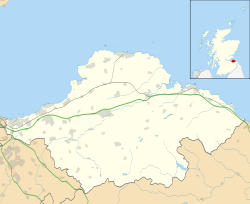| Whitekirk and Tyninghame | |
|---|---|
Location within Scotland | |
| OS grid reference | NT596815 |
| Council area | |
| Lieutenancy area | |
| Country | Scotland |
| Sovereign state | United Kingdom |
| Post town | Dunbar |
| Postcode district | EH42 |
| Dialling code | 01620 870xxx |
| Police | Scotland |
| Fire | Scottish |
| Ambulance | Scottish |
| UK Parliament | |
| Scottish Parliament | |
Whitekirk and Tyninghame is a civil parish in East Lothian, Scotland, which takes its name from the two small settlements of Whitekirk and Tyninghame. The two separate ancient parishes were joined in 1761.

